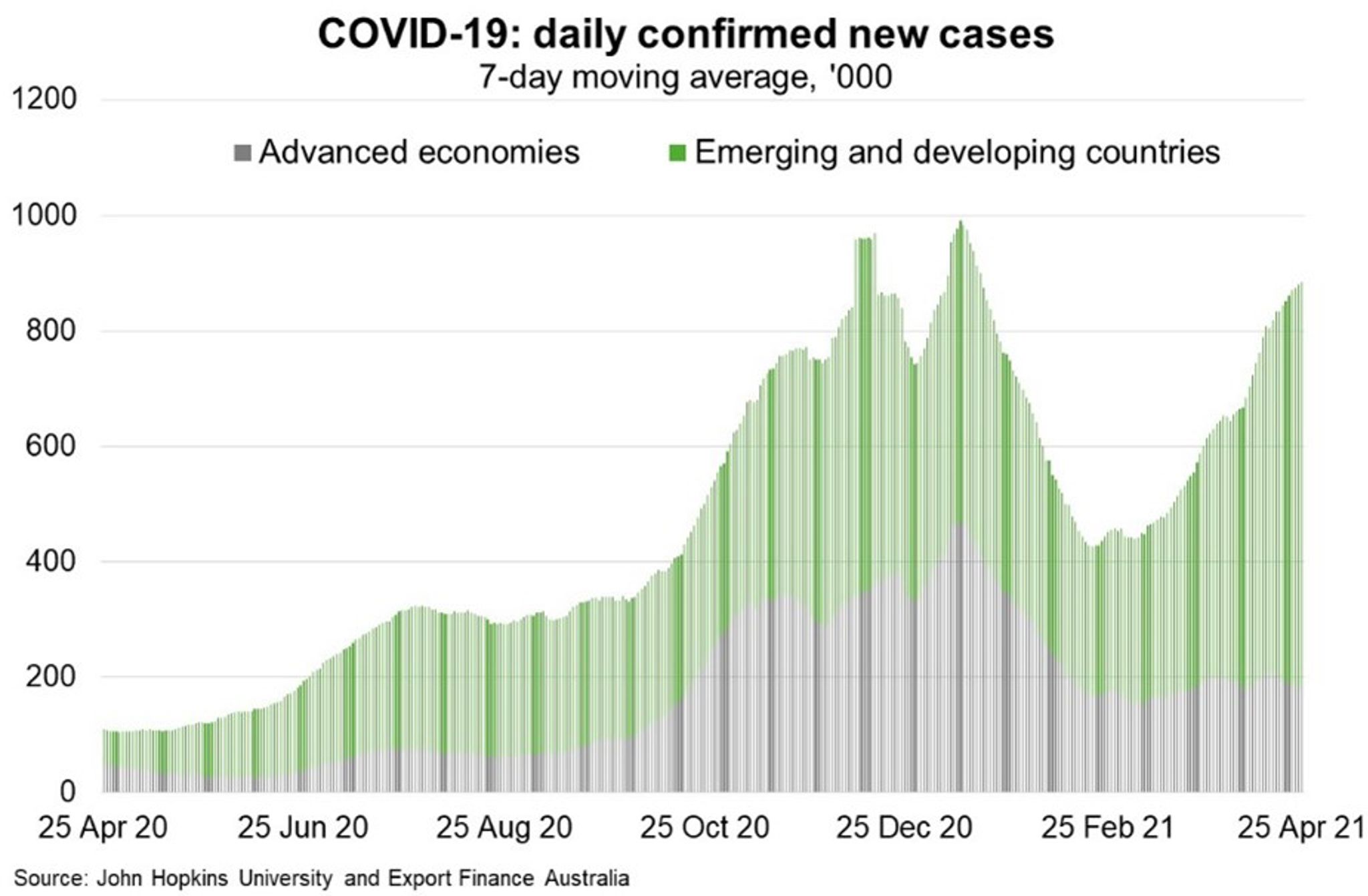World—Economic prospects improve, but diverge
After contracting 3.3% last year, prospects for the global economy are brightening. Recent IMF forecasts suggest global GDP will expand by 6% in 2021, and 4.4% in 2022—a full percentage point more than IMF forecasts published six months ago. The upward revision reflects progress on vaccinations, additional fiscal stimulus in a few large economies, and the adaptation of economic activity to lower mobility. Similarly, prospects for a quick recovery in world trade have improved. World merchandise trade volumes are forecast to increase by 8% in 2021 and 4% in 2022, after having fallen 5.3% in 2020, according to the World Trade Organisation.
But economic recoveries are diverging across countries. Forecasts for advanced economies have seen the largest growth upgrades, driven by expectations of a roaring US recovery. US Congress has passed two stimulus packages since December, worth nearly US$3 trillion (equivalent to two years of Australia’s GDP), and over 40% of Americans have had at least one vaccine dose. Indeed, the IMF expects US GDP to exceed its pre-pandemic projections for output by 2024. GDP in other advanced economies is projected to be just 1% below their pre-pandemic path by 2024. The rate of recovery has far exceeded that experienced after the GFC: five years after the GFC, GDP in advanced economies was still around 10% below the IMF’s pre-GFC forecast.
But emerging markets (except China) will be hit harder during this period. The virus continues to spread throughout emerging markets (Chart) where immediate prospects for mass vaccination are low. Many emerging markets have limited policy space to respond, with public debt and central bank balance sheets already elevated. Tourism reliance compounds the problem in many countries. Medium-term losses will therefore be more significant. Even China won’t catch up to GDP forecasts made by the IMF before COVID-19 by 2024 and other emerging markets in Asia will remain 8% below pre-pandemic forecasts.

